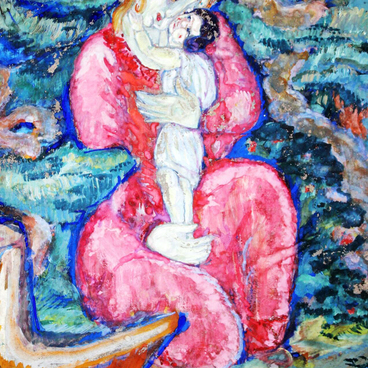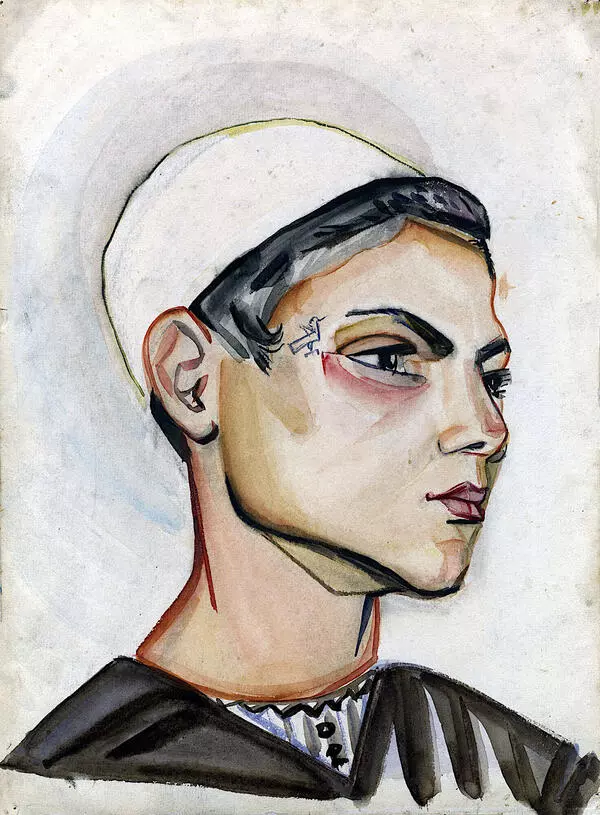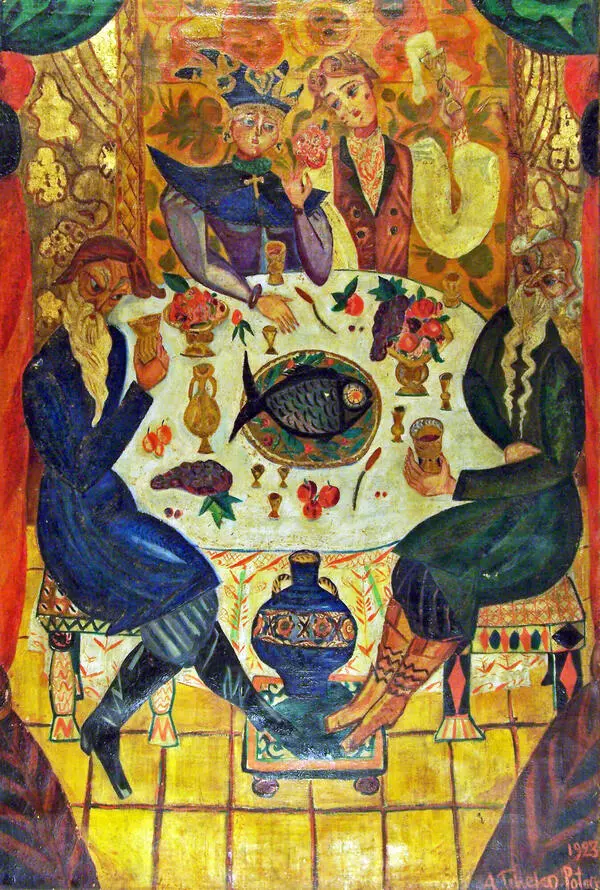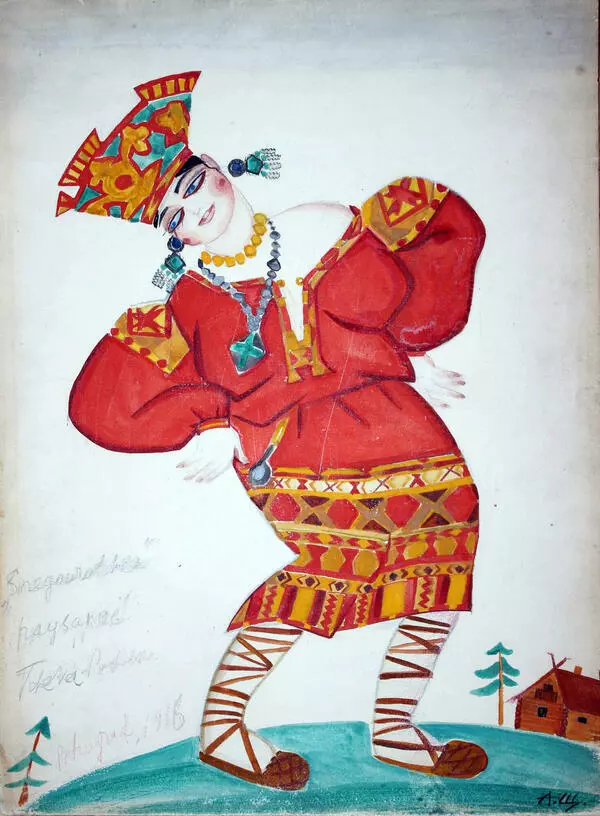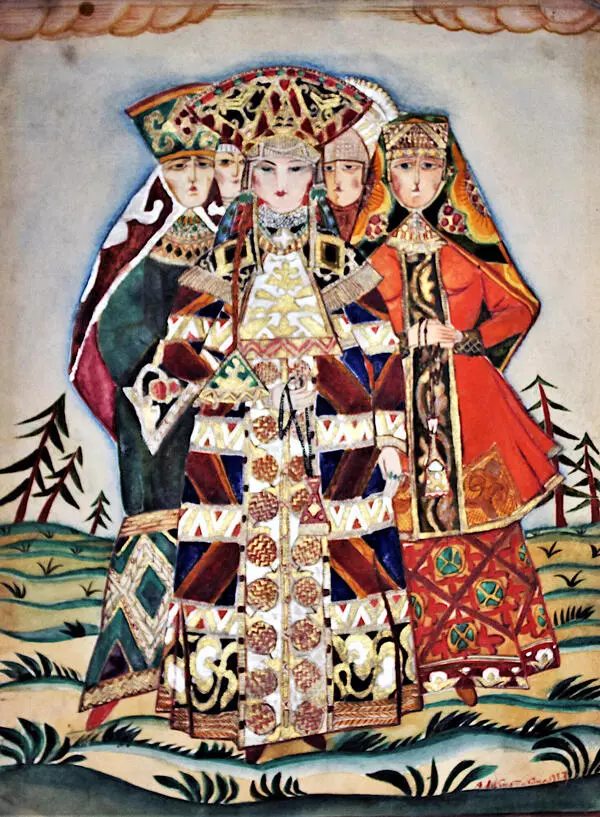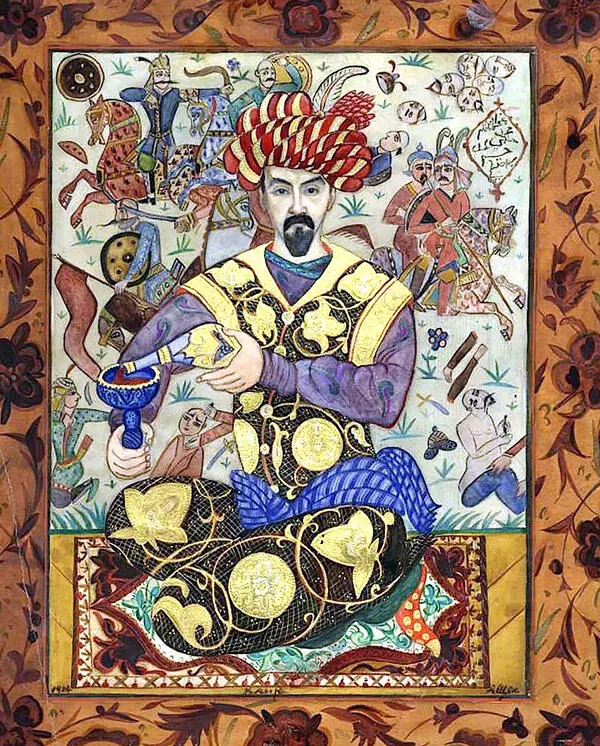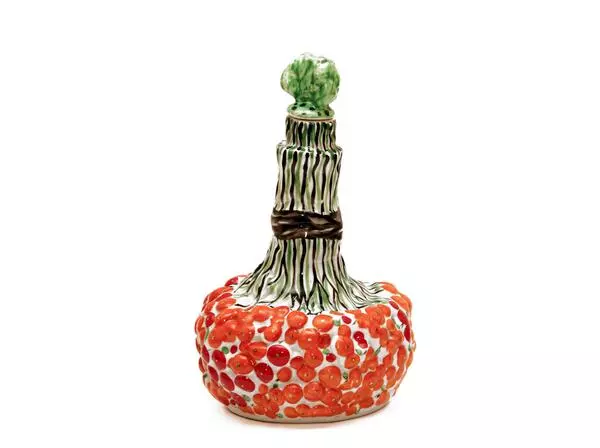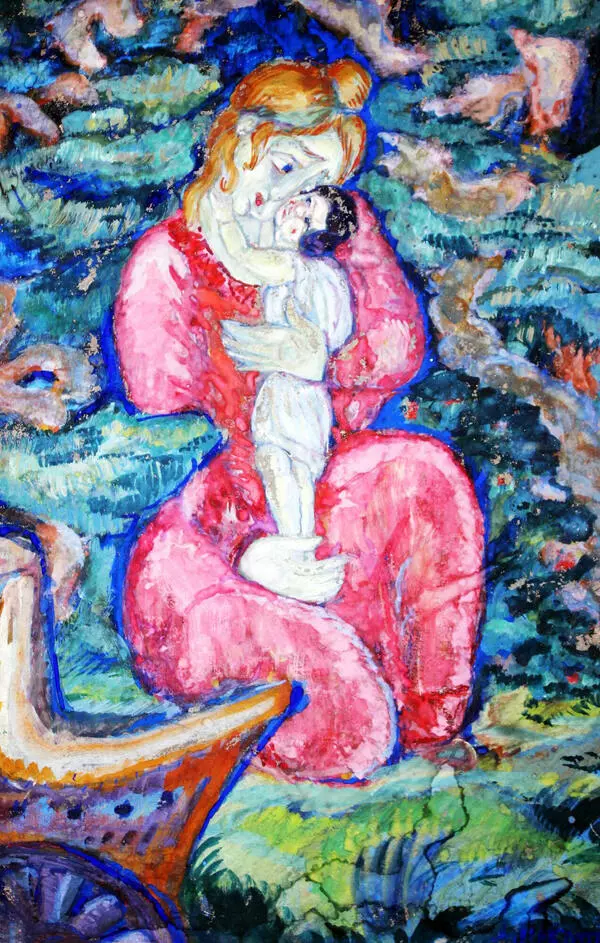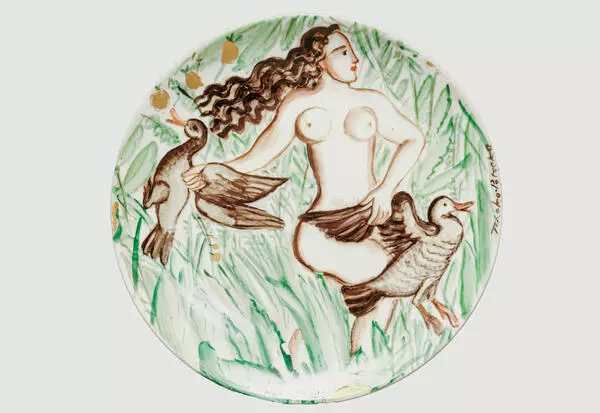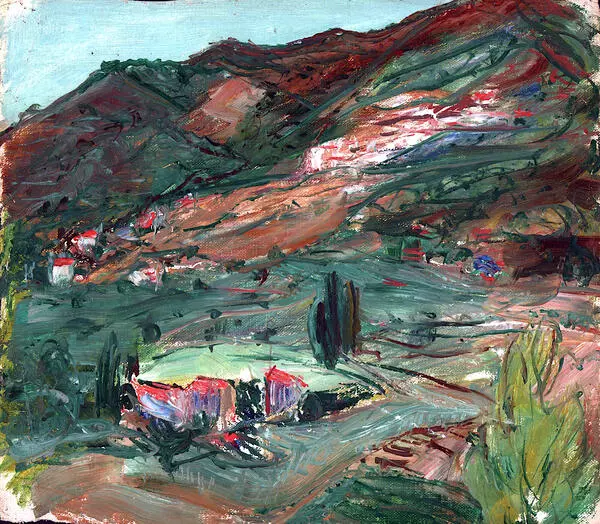The work “The Fight of Mstislav with Rededya” was created by Alexandra Vasilievna Shchekatikhina during her studies in 1908–1915 under Nicholas Roerich and Ivan Bilibin. Perhaps the theme of the drawing was set by her beloved teacher Nikolai Konstantinovich Roerich, who was passionate about Old Russian history.
The young artist made her first steps in art during the years when her mentors and senior colleagues designed performances of Diaghilev’s Ballets Russes and the “Starinny theater”. This period in the art of stage design was the most flourishing and directly influenced many other areas of art. Later, Shchekatikhina would work on scenery design only sporadically, but the theatrical, spectacular beginning defined all her work.
Alexandra Vasilievna preferred to call her painting “French”. One of her Parisian mentors, Maurice Denis, on the contrary, saw “Slavic charm” in his student’s art. Indeed, artistic sensitivity was combined in Shchekatikhina with genuine originality. She was brought up in Ukraine in a patriarchal Old Believer family and came to Saint Petersburg, the largest city in capitalist Russia, at the age of 16. This contrast left an indelible emotional imprint on her further development.
Shchekatikhina’s art had folk roots and the severe Kerzhak spirit (an ethnoreligious group of Old Believers). However, her work at the same time was exceptionally sensitive to modernity, new rhythms, visual impressions, and stylistic trends. Shchekatikhina’s teachers and supervisors were the masters associated with the “World of Art” association at the School of the Society for the Encouragement of Arts, where she studied from 1908 to 1915; among them were Nicholas Roerich, Ivan Tsionglinsky, and Ivan Bilibin, and later at the porcelain factory — Sergey Chekhonin. The artist’s talent was formed in an environment where people dreamed of a synthesis of arts and of bringing beauty into everyday life. Roerich was the greatest influence on her of all the teachers. He stood out among other members of the “World of Art” due to his picturesque monumentalism. Shchekatikhina repeatedly turned to the Roerich’s motifs. But the impulsive talent of the artist remained alien to rationalism and Roerich’s sophisticated literary symbolism. A single emotional impulse runs through her compositions inspired by folklore and history, turning them into expressive colorful streams.
The young artist made her first steps in art during the years when her mentors and senior colleagues designed performances of Diaghilev’s Ballets Russes and the “Starinny theater”. This period in the art of stage design was the most flourishing and directly influenced many other areas of art. Later, Shchekatikhina would work on scenery design only sporadically, but the theatrical, spectacular beginning defined all her work.
Alexandra Vasilievna preferred to call her painting “French”. One of her Parisian mentors, Maurice Denis, on the contrary, saw “Slavic charm” in his student’s art. Indeed, artistic sensitivity was combined in Shchekatikhina with genuine originality. She was brought up in Ukraine in a patriarchal Old Believer family and came to Saint Petersburg, the largest city in capitalist Russia, at the age of 16. This contrast left an indelible emotional imprint on her further development.
Shchekatikhina’s art had folk roots and the severe Kerzhak spirit (an ethnoreligious group of Old Believers). However, her work at the same time was exceptionally sensitive to modernity, new rhythms, visual impressions, and stylistic trends. Shchekatikhina’s teachers and supervisors were the masters associated with the “World of Art” association at the School of the Society for the Encouragement of Arts, where she studied from 1908 to 1915; among them were Nicholas Roerich, Ivan Tsionglinsky, and Ivan Bilibin, and later at the porcelain factory — Sergey Chekhonin. The artist’s talent was formed in an environment where people dreamed of a synthesis of arts and of bringing beauty into everyday life. Roerich was the greatest influence on her of all the teachers. He stood out among other members of the “World of Art” due to his picturesque monumentalism. Shchekatikhina repeatedly turned to the Roerich’s motifs. But the impulsive talent of the artist remained alien to rationalism and Roerich’s sophisticated literary symbolism. A single emotional impulse runs through her compositions inspired by folklore and history, turning them into expressive colorful streams.



